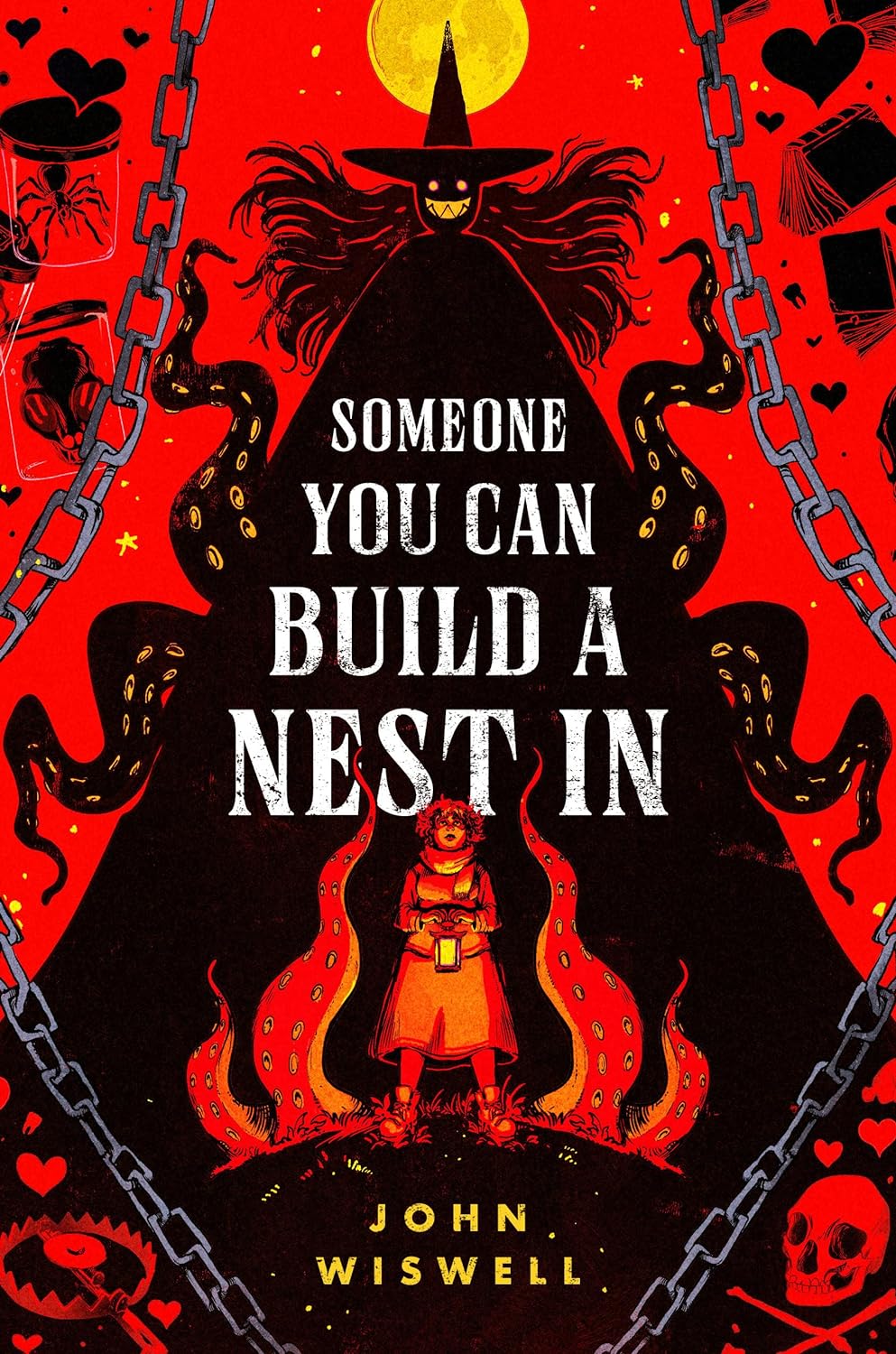- The Good: Charming bloody monster fantasy romance
- The Bad: A little too sweet and sappy
- The Literary: Nebula and Hugo-nominated fantasy
Shesheshen is a monster that lives in a bog. Specifically, she’s a shapeshifter, and after being rudely interrupted from her hibernation by monster hunters, she constructs a body from the limbs of her previous victims, with a metal chain for a backbone and a bear trap for an extra mouth. She fights them, but in her weakened state just out of hibernation, she’s chased off a cliff. Unexpectedly, she’s found and nursed back to health by a woman named Homily, who thinks Shesheshen is a human.
As Shesheshen recovers, she thinks that Homily would be a great host for her eggs, which would devour Homily from the inside out. Homily is warm and thickly built—a perfect nest. But Shesheshen soon realizes she actually enjoys spending time with Homily. In fact, she doesn’t want her to die at all, Shesheshen wants to protect Homily.
Although this book is primarily billed as monster horror fantasy, I’d classify it more as a charming queer romance, although the sapphic part of the romance is questionable as well. I suppose since Shesheshen lays eggs she’s a female, but the relationship is more of a human-monster romance. I have a particular love of human-monster romance stories. Remember the human-vampire stories popular a couple of decades ago, or the slightly more recent best picture film The Shape of Water?
While some human-monster romances rely on excitement and danger, Shesheshen and Homily’s romance is cozy and comforting. They come to rely on each other, particularly because Homily is the black sheep of her family, with an especially abusive mother. It turns out that Homily’s family thinks they have a curse, put on them by a shapeshifting monster. Shesheshen has never cursed anyone and now it’s going to be even more difficult to tell her girlfriend she’s not human.
As the story is told from Shesheshen’s perspective, there’s a lot of humor in the observations of humans and their practices. To her, the fact that she eats people in a gory mess and essentially constructs herself out of body parts and found materials is normal. Her physical nature is fun, interesting, and nicely conceptual. She’s the main character of her own story so I guess it’s not surprising that she’s never punished for all the people’s she’s killed.
The toxic family drama is an interesting addition to the plot, which rings true with all its therapy language, and makes the reader root for Homily. It’s surprising that Shesheshen recognizes these family dynamics, despite not knowing really anything about human culture and having never known any family of her own. Still, it’s a sweet journey healing from family trauma.
The best part of the book is Shesheshen’s long-time forest companion, Blueberry, a rare blue bear. She’s the real innocent in all of this. She does suffer at the hands of the humans, but I’m happy to say (yes, spoiler) that she recovers and returns to her normal life.
I really enjoy the weird mashup of this story, especially the gory fights, monster human romance, humorous commentary on human behavior, and the abusive mother and sister villains. This book certainly isn’t for everyone, but if you’re looking for a sweet and comforting feel-good story, and don’t mind a little blood and gore, this is for you!
